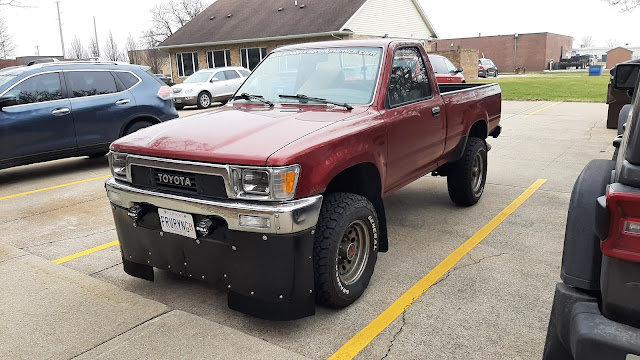Introduction: Part 4
Fortuitously, it was around this time that a new user appeared on the Ecomodder forum. He was a journalist and author, and I had seen articles of his posted on the popular Autospeed website, which it turned out he ran. He was writing a new book on techniques of aerodynamic modification for hobbyists, he posted, and was looking for cars to feature in the book. Specifically, he wanted examples of modifications that had been tested. I emailed some pictures of my car and got the response I should have expected: sorry, but these modifications haven’t been tested and can’t be in the book.
That changed everything. I had done some rudimentary fuel economy testing at one point—recording average mileage over a mile-long section of road with and without solid wheel covers—but beyond that, nothing. I don’t think I had even realized before this that I could test for changes in drag and lift. I had enrolled in an engineering degree program but was only in my first year and still pretty much clueless. However, over the next two years I changed my attitude and understanding completely. I took more of an interest in statistical validation of test results; for instance, the math showed that my testing of fuel economy changes, with such small sample sizes and large scatter in the data, was not valid for confidently stating that drag had changed. I bought textbook after textbook and read voraciously, marking up the books with margin notes and questions. I bought pressure-measuring equipment and began to test for myself, recording changes in aerodynamic pressures on the road with body changes such as a spoiler or air curtain ducts. I verified authors’ claims when something sounded unbelievable, such as an argument by one textbook writer that forward-facing surfaces on a curved car front could actually reduce drag by developing negative differential pressure.
Now, here I am. I decided to start this blog to have somewhere to post my story, articles I’ve written on various topics related to aerodynamics, and the results of my testing. I currently have two cars: a 2013 Prius, which I modified significantly back when I still believed in guessing, and a 1991 Toyota pickup, my late grandfather’s truck that is as yet unmodified and will be developed by testing and measuring changes.
 |
| It comes off much sleeker from this angle than the typical dowdy Prius "look." |
 |
| This truck has been in my family for more than 25 years. |
I hope this can be a resource for others interested in making their own modifications, whether they are searching for better fuel economy like I was, better autocross or road course handling, improved stability, or just to satisfy curiosity. Perhaps most importantly, I want others to benefit from my mistakes: don’t develop your car—aerodynamics, engine/exhaust, suspension, anything—by guess! And certainly don’t trust what you read online, including this blog; take everything with a healthy dose of skepticism and verify what you can.
Aerodynamic modification can be very rewarding; if done systematically, you can efficiently create an aerodynamic "package" for your car to increase the downforce it produces, improve its stability, or reduce its drag. Measurement will tell you which modifications work and which don't, and how much effect each has. You will be constantly surprised at how wrong your guesses are, as I have been! But it is far better to know than to shoot in the dark and hope for good results.
Here goes nothing.



Comments
Post a Comment